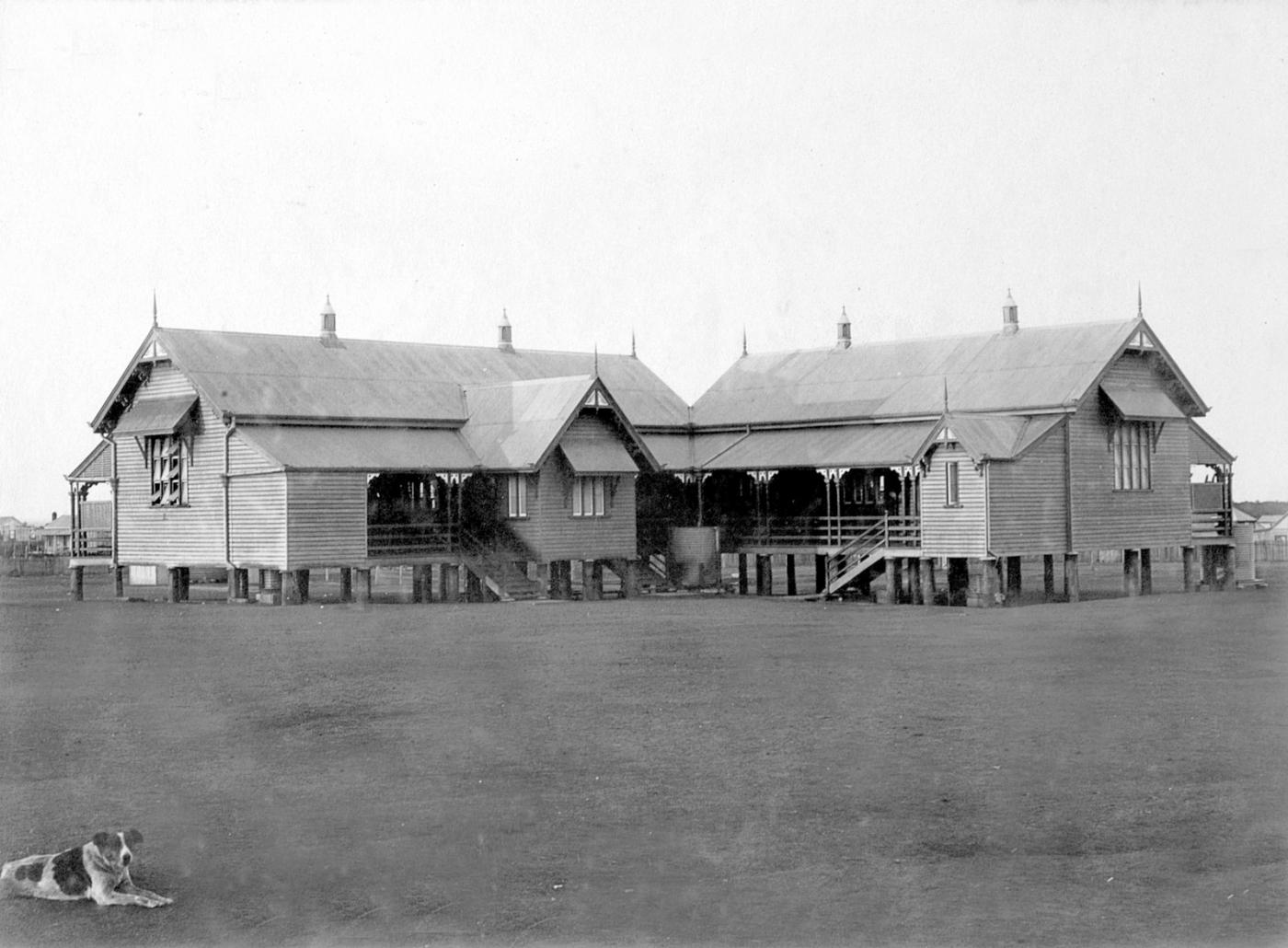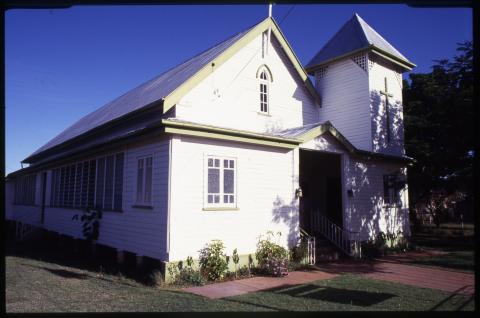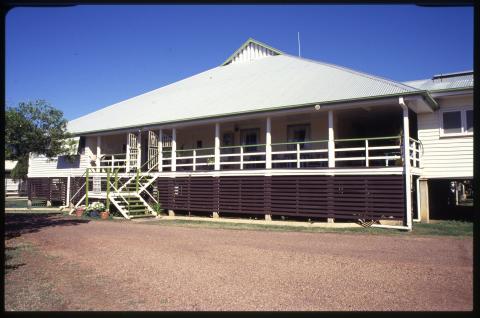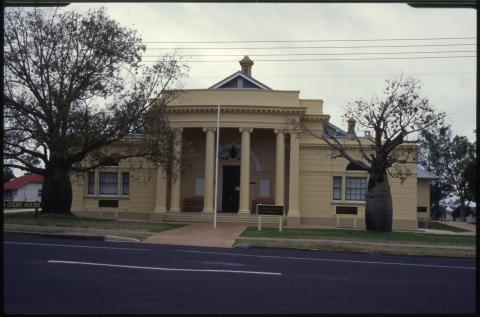
- News of the day
-
Northern Miner, Tuesday 20 December 1898, page 7
RICHMOND HILL STATE SCHOOL.
(Contributed.)
Breaking-up day at this school was a pleasant function in this as in former years. The afternoon was spent in races of various kinds. There was a fair sprinkling of visitors, some of whom ably assisted the Committee in carrying out the programme of sports. Mr T. Gough acted as starter and handicapper, and considering he had no previous records to go on, did his work in a most capable manner. Messrs. Dee, Hastings, Bradshaw, Tilley, Fisher, Lloyd, Graham, Ayton, and De Castres were his co-adjutors, and rendered able assistance in judging and keeping things going.
At 5p.m. the children were marched into school and each child received a bottle of lemonade and a bag replete with good things.
It is extremely pleasant to be able to chronicle that the soft drinks, over 10 dozen, were the voluntary, and I must say, magnificent gift of 'Mr. De Castres. The Committee certainly ought to be and, I believe are grateful to Mr. De Castres for his handsome and appropriate gift. Before the children were dismissed the Headmaster distributed certificates to all those who had made a certain percentage of attendance for six months or over.
About 3.30 p.m. the Headmaster, on behalf of the teachers, presented Miss N. Woods with a handsome gold watch, on the occasion of her leaving for Toowoomba. He said he was very pleased to make the presentation, as it evinced the ‘kindly and harmonious feeling pervading the staff’. On behalf of her co-workers he wished her every success in her new sphere.
When the children were dismissed there was a meeting of the Committee to discuss matters affecting the school. Pleasure was expressed that tenders for the new wing had at last been called. The Chairman, Mr. Bradshaw on behalf of the Committees presented Mr T. Gough with a handsome gold locket in token of the invaluable aid rendered by him towards raising the funds for the new wing.
On Wednesday evening the adult teachers presented Mrs Cunningham with a handsome electro-plated egg-stand and spoons to mark their -appreciation of her kindness in providing them during the year about to close with the cup "that cheers but not inebriates" during lunch time.
- Background
-
The provision of state-administered education was important to the colonial governments of Australia. National schools were established in 1848 in New South Wales and continued in Queensland following the colony's creation in 1859. After the introduction of the Education Act 1860, Queensland's public schools grew from four in 1860 to 230 by 1875. The State Education Act 1875 provided for free, compulsory and secular primary education and the establishment of the Department of Public Instruction. This further standardised the provision of education, and despite difficulties, achieved the remarkable feat of bringing basic literacy to most Queensland children by 1900.
The establishment of schools was considered an essential step in the development of early communities and integral to their success. Locals often donated land and labour for a school's construction and the school community contributed to maintenance and development. Schools became a community focus, a symbol of progress, and a source of pride, with enduring connections formed with past pupils, parents, and teachers. The inclusion of war memorials and community halls reinforced these connections and provided a venue for a wide range of community events in schools across Queensland.
The Queensland government developed standard plans for its school buildings to help ensure consistency and economy. From the 1860s until the 1960s, Queensland school buildings were predominantly timber framed, an easy and cost-effective approach that also enabled the government to provide facilities in remote areas. Standard designs were continually refined in response to changing needs and educational philosophy and Queensland school buildings were particularly innovative in climate control, lighting, and ventilation. Standardisation produced distinctly similar schools across Queensland with complexes of typical components.
Courtesy of the Queensland Heritage Register
/146.2653079,-20.0619962,7/450x450@2x.png?access_token=pk.eyJ1IjoicXNhLWRpc2NvLXFsZCIsImEiOiJjamJmdTgyZXEyeWNjMnlxZm8xcmtieHgxIn0.lmT9J5tTPKGuuccQgCVSAg)



